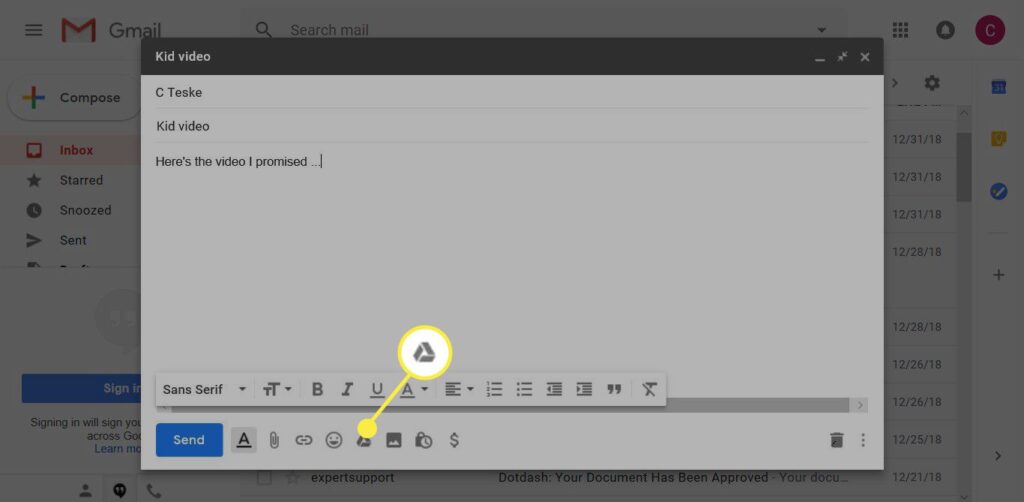Why Send Videos Through Email?
Videos are a powerful medium for communication, offering a more engaging way to convey information compared to text or images alone. Whether you’re sharing a promotional video, a tutorial, or a personal message, videos can significantly enhance your communication. Here are a few reasons why you might want to send videos through email:
- Increased Engagement: Emails with videos tend to have higher open and click-through rates. Recipients are more likely to engage with video content than with plain text.
- Improved Clarity: Videos can help explain complex topics more clearly than written descriptions, making them ideal for tutorials or product demonstrations.
- Personal Touch: Sending a video message can add a personal touch to your communication, making it feel more direct and engaging.
Methods for Sending Videos Through Email
1. Sending Video as an Email Attachment
Most email services allow you to attach files directly to your emails. However, there are size limitations to consider:
- Gmail: Allows attachments up to 25 MB.
- Outlook: Allows attachments up to 20 MB.
- Yahoo Mail: Allows attachments up to 25 MB.
If your video file is within these limits, you can attach it directly to your email. Here’s how to do it:
Steps to Attach a Video in Gmail:
- Compose a New Email: Open Gmail and click on the “Compose” button.
- Attach the Video: Click on the paperclip icon at the bottom of the compose window. Locate and select your video file.
- Complete the Email: Add a subject and message, then click “Send.”
Steps to Attach a Video in Outlook:
- Open Outlook: Launch the Outlook application and select “New Email.”
- Attach the Video: Click on “Attach File” or the paperclip icon, then choose your video file.
- Finish the Email: Add your message and subject, then click “Send.”
2. Sending Video Links
If your video file exceeds the size limits of email attachments, consider uploading it to a video hosting platform (like YouTube or Vimeo) and sharing the link. This method is effective and allows you to bypass file size limitations.
Steps to Send a Video Link:
- Upload the Video: Go to a video hosting platform and upload your video. For example, on YouTube, click the “Upload” button and follow the prompts.
- Copy the Video Link: Once the video is uploaded, copy the link provided.
- Compose Your Email: Open your email client and compose a new message.
- Paste the Link: In the body of your email, paste the video link. You can also create a clickable thumbnail by embedding the link with an image or a button.
- Send the Email: Add a subject and any additional message, then send the email.
3. Using Cloud Storage Services
Cloud storage services like Google Drive, Dropbox, or OneDrive allow you to upload larger video files and share them via links. This method is particularly useful for files that exceed the attachment size limits.
Steps to Use Google Drive:
- Upload the Video: Go to Google Drive and upload your video file.
- Get Shareable Link: Right-click on the uploaded video and select “Get link.” Ensure the link sharing settings are set to “Anyone with the link.”
- Compose Your Email: Open your email client and create a new email.
- Insert the Link: Paste the shareable link into the body of your email.
- Complete and Send: Add your message and subject, then send the email.
4. Embedding Videos in Emails
While most email clients do not support direct video embedding due to compatibility issues, you can create a clickable thumbnail that links to your video. This approach can enhance the visual appeal of your email.
Steps to Embed a Video Thumbnail:
- Upload Your Video: Use a platform like YouTube or Vimeo to host your video.
- Create a Thumbnail: Take a screenshot of your video or use a custom image as a thumbnail.
- Link the Thumbnail: In your email client, insert the image and hyperlink it to your video’s URL.
- Send the Email: Add a message and subject, then send your email.
5. Using Video Email Services
There are specialized services designed for sending video emails, such as Bonjoro and BombBomb. These platforms allow you to record and send personalized video messages directly through email.
Steps to Use Video Email Services:
- Sign Up for a Service: Choose a video email service and create an account.
- Record Your Video: Use the service’s tools to record your video message.
- Send the Video: Follow the service’s instructions to send the video via email.
Tips for Sending Videos Through Email
- Keep It Short: Aim for short videos (1-3 minutes) to maintain viewer engagement.
- Optimize File Size: If attaching a video, consider compressing it to fit within size limits without sacrificing quality.
- Use Clear Subject Lines: Make your subject line enticing to increase open rates.
- Test Before Sending: Send a test email to yourself to ensure the video link or attachment works correctly.
- Follow Up: If the video is important, consider following up with recipients to ensure they received and viewed it.
Conclusion
Sending videos through email can enhance your communication and engagement with recipients. By following the methods outlined above, you can effectively share video content, whether through attachments, links, or specialized services. Understanding the limitations of email providers and utilizing cloud services or video hosting platforms will ensure your videos are received and viewed successfully.
FAQ Section
How can I send a video through email?
You can send a video through email by attaching it directly (if within size limits), sharing a link from a video hosting platform, or using cloud storage services.
What are the size limits for video attachments in email?
Gmail allows attachments up to 25 MB, while Outlook allows up to 20 MB. Yahoo Mail also allows attachments up to 25 MB.
Can I embed a video directly in an email?
Most email clients do not support direct video embedding. Instead, you can create a clickable thumbnail that links to the video.
What if my video file is too large to send via email?
If your video file is too large, consider uploading it to a cloud storage service or video hosting platform and sharing the link in your email.
Are there services specifically for sending video emails?
Yes, services like Bonjoro and BombBomb specialize in sending video emails and allow for personalized video messages.
How can I make my video emails more engaging?
Keep videos short, use clear subject lines, and consider adding a compelling thumbnail or image to attract attention.
What should I do if my video link doesn’t work?
Double-check the sharing settings on your video hosting platform to ensure the link is accessible. You may also want to test the link by sending it to yourself first.
Additional Resources
For more information on video sharing and email best practices, you can refer to the Wikipedia page on Email.



